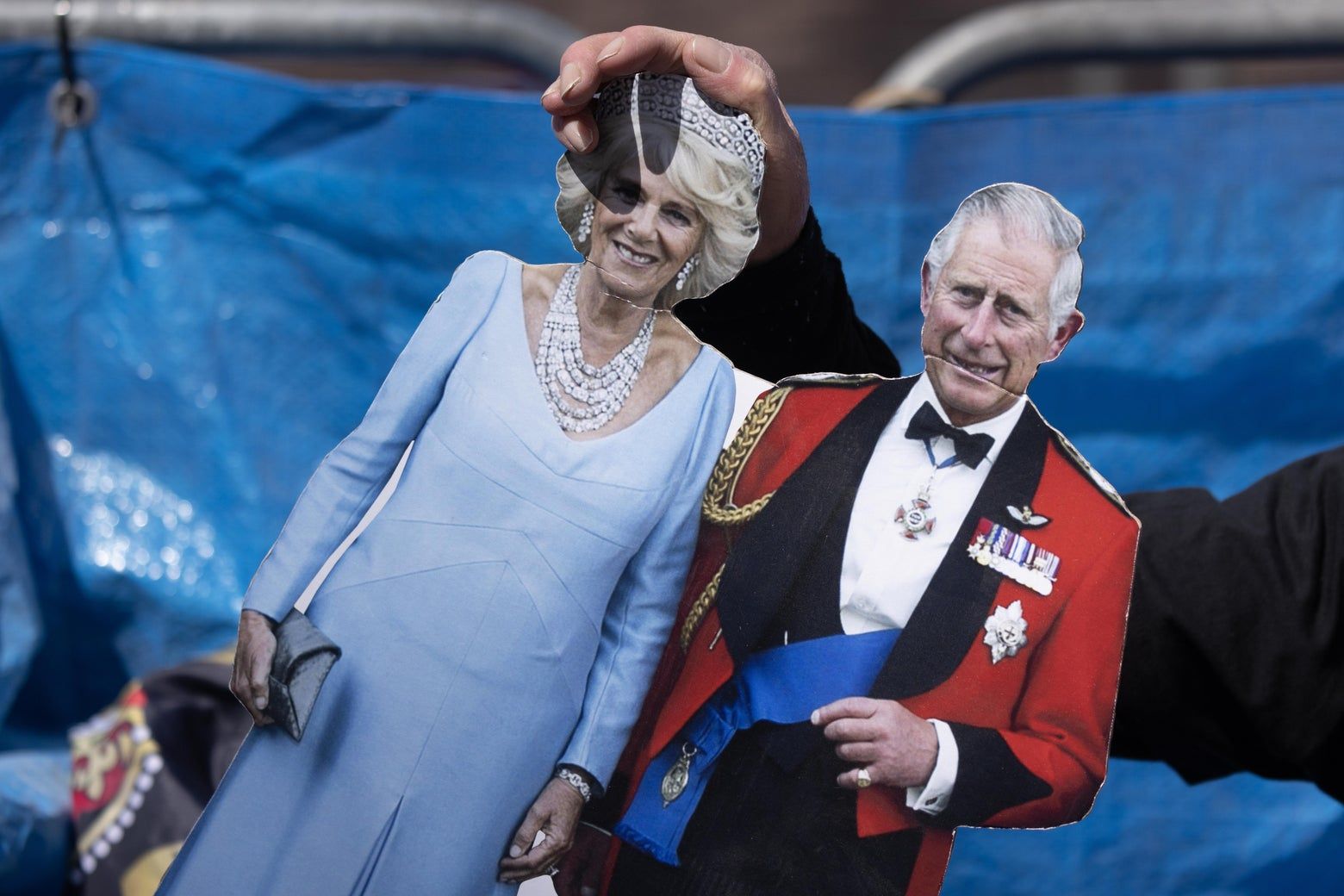Camilla tried to avoid scandal with the Kohinoor diamond. It’s not going away.
When the coronation ceremony for King Charles III and Queen Consort Camilla takes place at Westminster Abbey on Saturday, one object will be missing. Camilla will not wear a crown with an infamous centerpiece: the Koh-i-noor diamond, a treasure believed to have been seized from South Asia centuries ago that India would now like to take back from those old crowns, much obliged.
Indeed, the royal family may prefer that this prized bit of colonial plunder not show up at all, or even be mentioned, during the London pageantries, lest it spark a “diplomatic row” between the U.K. and India. Historic royal garb usually sits in the Tower of London during non-coronation times, but the Koh-i-noor’s crown was removed from display there earlier this year for “modification work,” the Guardian noted in February. The diamond itself will only resurface at the tower near the end of May, when it will gain a new designation as a “symbol of conquest.” If Indian visitors would like to view the Koh-i-noor for themselves and evaluate the origin story added to the exhibit, they’ll have to shell out about 34 pounds for the privilege.
Advertisement
Advertisement
Advertisement
Advertisement
Whatever you make of the fluffery of modern monarchy, the Koh-i-noor’s omission is a pretty big deal for the institution, not that they’d admit it. The royals didn’t really acknowledge the diamond itself or the general consensus that it hails from South India—rather, they say, this is being done “in the interests of sustainability and efficiency,” in line with the supposedly environmentalist King Charles’ choice of “recycled” older gloves for the ceremony. (Such concern for Mother Nature is perhaps belied by Camilla’s choice to accept an ivory scepter at the ceremony.) But the diamond is quite the symbol for the reduced stature of the British Empire, and the crown’s careful actions a sign of the public favor, power, and influence its former colonies now hold.
Advertisement
There are many conflicting tales and myths about the Koh-i-noor and its significance, but here’s some of what we know for sure: The diamond, one of the largest and most expensive precious stones in the world, is agreed to have been discovered during medieval times, when much of the region now known as India was governed by Islamic rulers who oversaw the Delhi Sultanate (and loved all the diamonds available there). The Koh-i-noor became a trophy for succeeding conquerors of the region—Mughal emperors, Persian invaders, the Sikh Empire—until the mid–19th century, by which time those rulers had fallen and the British crown had consolidated direct control of India. The diamond then came under the official possession of the royals, who transformed it into a fixture of their foreign-origin crown jewels collection when Queen Alexandra incorporated it into her headgear. The diamond then appeared on the coronation crowns worn by Queen Mary and Queen Elizabeth the Queen Mother; the latter sported it again while attending the coronation of her daughter, Elizabeth II.
Advertisement
Advertisement
When Queen Elizabeth II took the throne in 1952, Great Britain had only recently ceded control over much of South Asia. Even amid her personal efforts to whitewash the kingdom’s cruelty and discourage independence movements, the most piercing symbols of the United Kingdom’s exploitation remained with Elizabeth—on her horses, inside Buckingham Palace, and, most significantly, on her crown. Thousands of these crown jewels adorn the ceremonial set pieces used to grant the royals their formal status. The U.K. may have returned many of the colonial lands, but not many of the treasures.
Elizabeth’s death reinvigorated a global debate over whether Buckingham Palace should return all those jewels already. There’s the financial aspect, to be sure—those things are worth a lot, and the postwar era was not favorable to postcolonial redevelopment. But more than anything, there’s the symbolism of it all. The nations Britain once made royal subjects are not going to run roughshod over the U.K. anytime soon, but doesn’t it make sense to cede these treasures, given the state of the empire? What does it mean for the royal family, whom much of the world doesn’t really care for, to continue to peacock around with stolen jewels?
It’s a problem that’s not going away. When Camilla’s crown is unveiled on Saturday, the spot where the Koh-i-noor would normally sparkle will instead be filled in by three of the Cullinan diamonds, named after the colonial-era South African mining town where they were discovered in the early 20th century. Seems pretty clear that South Africa wants those diamonds back, too.
Source: Slate


